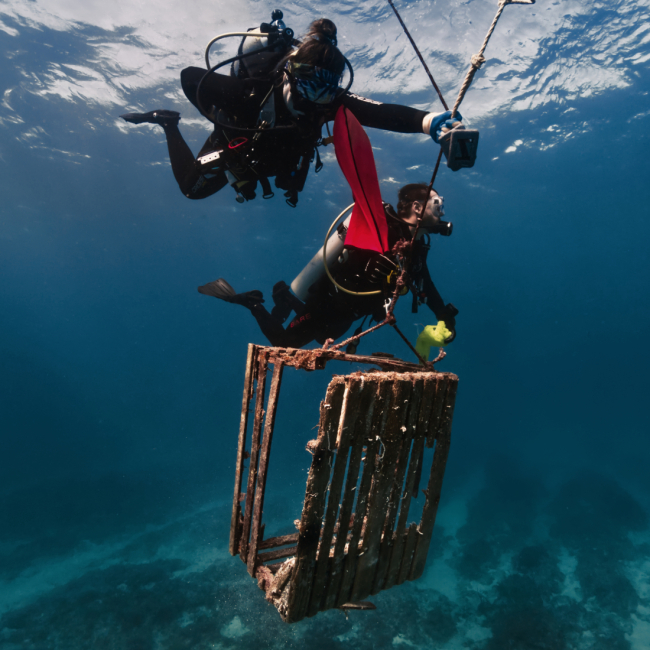Florida is unique as the only state that borders both the Atlantic Ocean and the Gulf of Mexico. No matter where you are in the state, you’re never more than 60 miles from the nearest body of water. It also means that the daily choices and activities of Florida’s residents and visitors can easily lead to debris in our coastal and marine habitats. Luckily, our partners across the region are kicking off the New Year with renewed energy and effort in leading marine debris removal and prevention projects to keep Florida’s waters healthy and free of debris.
Students at Eckerd College and the University of North Florida are learning to reduce their single-use plastic consumption by making sustainable purchasing and personal decisions to ultimately prevent marine debris. The project’s Plastic Reduction Challenges gave students the opportunity to use a smartphone app to track their use of both plastic and plastic alternative items. During these challenges, the students also completed surveys to gauge their knowledge, views, and beliefs related to plastics, and whether their views changed over time. Through educational opportunities, workshops, and campus and community cleanups, students are learning firsthand the environmental impacts of their daily choices.
In the Miami area, the Ocean Conservancy and their partners, Debris Free Oceans and Big Blue & You, are leading a new Plastic Free Cities campaign to inspire the next generation of environmental leaders and engage local businesses. Through this campaign, local youth will gain the knowledge and skills to influence local food-related businesses to reduce single-use plastics through changes in purchasing, as well as fostering long-term behavior changes focused on marine debris prevention. Lessons learned and the campaign model will be shared through Ocean Conservancy’s Talking Trash and Taking Action Toolkit to provide guidance to other locations.
Further south in the Florida Keys, the National Marine Sanctuary Foundation, through their Goal: Clean Seas Florida Keys initiative, have been working with local dive shops to clean up debris left behind after Hurricane Irma struck the state in 2017. During the project, over 1,000 professional divers spent over 3,000 hours underwater, removing almost 80,000 feet of working line, 252 derelict traps, and over 54,000 pounds of debris (approximately the weight of 16 hippos!). The National Marine Sanctuary Foundation also created a Dive Down to Clean Up video for residents and visitors that highlights the importance of keeping the Florida Keys National Marine Sanctuary free of debris.

Florida has the longest coastline in the continental U.S. and is extremely susceptible to land-falling hurricanes. Unfortunately, it can take years to assess, remove, and properly dispose of debris generated by these storms. Florida’s Fish and Wildlife Conservation Commission, Florida’s Department of Environmental Protection, the City of Mexico Beach, Dog Island Conservation District, and the University of Florida are continuing to lead projects to help Florida recover from Hurricane Irma in 2017 and Hurricane Michael in 2019.
Stay tuned to our blog and social media throughout this month as we highlight these projects and the incredible accomplishments of our Florida partners to address marine debris!








